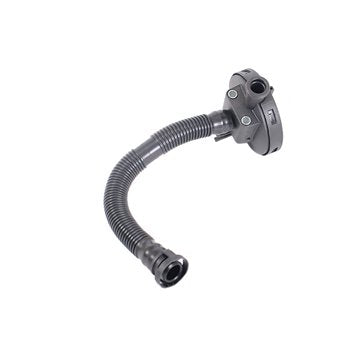Select a durable clp engine for better efficiency.
Select a durable clp engine for better efficiency.
Blog Article
How a Clp Engine Can Enhance Efficiency in Numerous Industries
The arrival of CLP engines marks a substantial change in operational efficiency across various fields, driven by their capacity to maximize gas usage and reduce downtime. Industries such as manufacturing and logistics stand to gain significantly from their robust layout and consistent power outcome, which promise to enhance procedures and boost efficiency. As organizations increasingly focus on sustainability along with effectiveness, the function of CLP engines ends up being also a lot more important. What continues to be to be seen is exactly how these developments will certainly shape the future landscape of commercial procedures and their influence on wider economic fads (clp engine).
Overview of CLP Engines
CLP engines, or Constant Liquid Propellant engines, represent a substantial innovation in propulsion technology, specifically for space applications. These engines utilize a continual feed system that enables the sustained expulsion of propellant, bring about boosted performance and efficiency compared to traditional strong or hybrid propulsion systems. By keeping a consistent flow of liquid propellant, CLP engines can accomplish a lot more exact thrust control, which is critical for maneuvering spacecraft in various goal situations.
The design of CLP engines incorporates innovative materials and cutting-edge gas administration systems. clp engine. This causes reduced weight and increased integrity, necessary variables for long-duration room missions. The continual procedure minimizes the risk of burning instability, an usual obstacle in conventional rocket engines.

Benefits in Production
The manufacturing of Constant Fluid Propellant (CLP) engines presents numerous remarkable benefits that improve both efficiency and cost-effectiveness. Among the primary advantages is the structured manufacturing process, which lowers the complexity connected with traditional propulsion systems. By making use of fluid propellant, producers can accomplish higher precision in engine performance, bring about optimized energy outcome and reduced waste.
In addition, CLP engines promote a greater level of modularity, enabling easier assimilation into numerous production lines. This versatility can considerably decrease lead times and enhance overall functional flexibility. Making use of CLP innovation likewise often tends to decrease the need for considerable upkeep because of less moving parts, which translates right into lowered downtime and operational expenses.

Applications in Logistics
Leveraging Continual Liquid Propellant (CLP) engines in logistics supplies considerable benefits in operational efficiency and integrity. These engines provide a robust service for various transportation demands, allowing the seamless motion of products throughout huge ranges. The intrinsic style of CLP engines permits for regular power output, which converts right into smoother and extra predictable transportation timetables.
Among the essential applications of CLP engines in logistics is in sturdy freight transportation, where they can drive both ground and aerial vehicles. Their capability to maintain high efficiency under differing load problems ensures that shipment timelines are fulfilled, thus enhancing customer fulfillment. In addition, CLP engines can be integrated into automated logistics systems, assisting in real-time tracking and enhancing course planning.
Moreover, the durability of CLP engines minimizes upkeep downtime, allowing logistics firms to maximize their operational capacities. This is especially advantageous in warehousing operations, where efficiency in handling and delivering items is important. As logistics remains to develop, the assimilation of CLP engines stands for a forward-thinking strategy that not just improves performance however also sustains the market's expanding demands for integrity view it and speed.
Influence On Energy Effectiveness
How do Continuous Liquid Propellant (CLP) engines enhance power efficiency in transport? CLP engines make use of a constant flow of liquid gas, maximizing burning procedures and preserving a stable drive result. This style decreases power losses connected with conventional burning engines, where gas shipment can vary and cause ineffectiveness.
The constant operation of CLP engines permits for a much more efficient thermal cycle, leading to greater details impulse compared to traditional engines. clp engine. This equates to decreased gas consumption for the very same quantity of job done, considerably lowering functional prices throughout numerous transportation markets, including air travel and maritime sectors
Furthermore, the capability of CLP engines to keep optimum efficiency under varying tons problems lowers the demand for constant velocity and slowdown, better boosting gas effectiveness. Enhanced power performance not only adds to cost savings yet likewise causes decrease greenhouse gas discharges, aligning with international sustainability goals.
Future Trends and Innovations
Arising improvements in Continual Liquid Propellant (CLP) engine modern technology guarantee to reinvent the landscape of transport performance and sustainability. As industries pivot towards greener options, CLP engines stand at the forefront, integrating cutting-edge materials and style approaches that enhance performance while decreasing ecological effect.
Among the most encouraging fads is the fostering of look at here hybrid systems that combine CLP engines with renewable resource resources. This harmony can optimize gas usage and decrease emissions, straightening with international sustainability goals. Additionally, advancements in computational liquid characteristics (CFD) are promoting the design of more aerodynamically effective engines, resulting in decreased drag and improved fuel efficiency.
Additionally, the advancement of clever tracking systems is readied to boost functional effectiveness. These systems leverage information analytics and IoT technology to optimize engine performance in real-time, ensuring that the engines operate within their most reliable specifications.
As research study proceeds to explore alternative propellant solutions-- such as biofuels and synthetic gas-- the future of CLP engines looks appealing. By utilizing these advancements, sectors can not just boost their effectiveness but likewise contribute dramatically to a cleaner, a lot more lasting future in transport.
Final Thought
Finally, CLP engines stand for a considerable development in performance across numerous industries. Their capability to optimize gas usage and decrease operational expenses, integrated with a continuous feed system, boosts power outcome and functional integrity. The assimilation of sophisticated products and less relocating components minimizes upkeep requirements, while positioning with sustainability goals positions CLP engines as a critical innovation for the future. Proceeded advancement in article source this area promises further improvements in efficiency and ecological efficiency.
Report this page